
How do I know if my child needs braces?
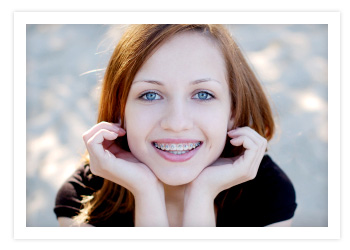
THINGS TO LOOK FOR:

Under-Bite
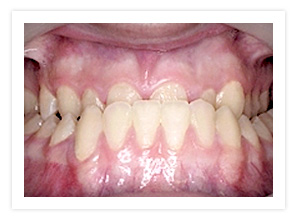
- "Anterior cross-bite"
- Lower teeth in front of upper teeth
- Can include one or many teeth
- Caused by:
- Small upper jaw
- Large lower jaw
- Abnormal eruption of teeth
Back to the Top

Cross-Bite
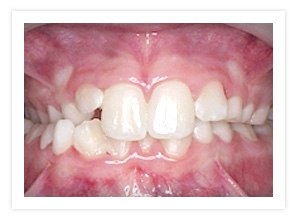
- "Posterior cross-bite"
- Upper teeth inside of lower teeth
- Can include one or many teeth
- Can be on both right and left sides or on just one side
- Caused by:
- Narrow/constricted upper jaw
- Large/wide lower jaw
Back to the Top

Open-Bite
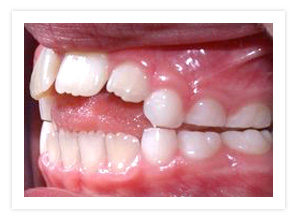
- Space between the upper teeth and lower teeth
- Most often includes the front teeth (but can also include the back teeth)
- Commonly associated with a thumb or finger-sucking habit
Back to the Top

Missing Teeth
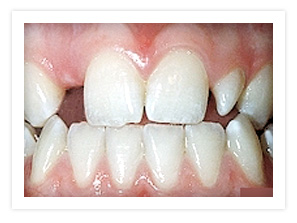
- Teeth on the right and left sides should be symmetric
- Teeth can be missing from the mouth for various reasons
- Don't exist - teeth never developed properly
- Failure to erupt - can be caused by significant crowding or an abnormal eruption pattern
Back to the Top

Teeth that Fail to Erupt

The most common teeth that fail to erupt are upper canines (the "eye" teeth, next to the upper incisors)
Back to the Top

"Buck" Teeth

- Front teeth that stick out too far are often associated with other orthodontic concerns.
- Crowded teeth
- Habits like thumb or finger-sucking
- Small lower jaws with lower teeth that don't fit with the upper teeth
- Correcting prominent front teeth not only improves self-esteem but also dramatically reduces the likelihood of traumatic injury to the teeth
Back to the Top

Crowding Teeth
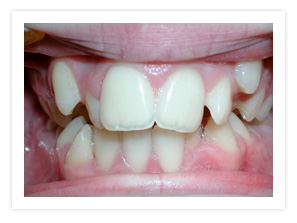
- Crowding occurs when the jaw is too small to accommodate all of the teeth in
the jaw
- Crowding can also be caused by premature loss of baby teeth and subsequent "shifting" of the teeth
Back to the Top